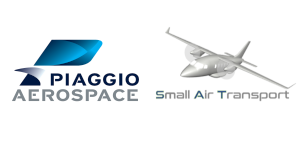Piaggio Aerospace has recently welcomed Clean Aviation representatives to its lab in Villanova d’Albenga to show the development of the ‘More Electric Fly-by-Wire’ technology, a project that is part of the Cleansky2 Small Air Transport Aircraft demonstrator (SAT).
The SAT is a project co-funded by Joint Undertaking – a public-private partnership between the European Commission and the European aeronautics industry – and realized by Piaggio Aerospace together with Italian and other European partners.
A Fly by Wire version of the P.180 has virtually taken off from Villanova D’Albenga, where the headquarters of Piaggio Aerospace is located, in a simulated first flight performed by a real aircraft. Challenging conditions have been created in the lab, to demonstrate that the aeroplane would work securely even in a real flight. In particular, the flight control system has been successfully tested in two critical situations: engine failure soon after the take-off and crosswind during landing.
SAT Demonstrator can be regarded as a valuable tool to develop and integrate new technologies in modern aircraft with increased capability and safety, improved performance and reduced climate impact: it is a key asset for Piaggio Aerospace, satellite companies, universities, and research centre to accelerate high tech and green transition of the aviation market.
Small Air Transport: a CleanSky2 Project
The SAT is an Aircraft designed to provide more efficient and safer operations by leveraging the adoption of electric and fault tolerant systems.
SAT is assumed to be a More Electric Aircraft (MEA), which means that SAT project implements electric – instead of pneumatic or hydraulic – General Systems in order to reduce maintenance costs and pave the way for All Electric Architecture (AEA).
SAT has a Flight Control System (FCS) Fly-by-Wire managed by a modular and scalable computing platform capable of developing to the full aerial vehicle management and to the complete automation of piloting and mission operations. It paves the way to single pilot operations and remote/optionally piloted systems.
The P180 Piaggio Aerospace flagship aircraft has been assumed as a “case study” for the integration of the following main systems upgrades developed in the framework of CleanSky2:
- A Fly-by-Wire (FbW) Manual Flight Control System (M-FCS) for “in-flight” handling
- An Electrical Braking System for “on-ground” control
- An Electric Landing Gear consisting of the main and nose legs electrical actuation system
- A new Power Generation and Distribution System (EPGDS) for the supply of all the electric/electronic equipment
- Low Power De-Ice System for main wing protection against ice-accretion
SAT AIRCRAFT 0 DEMONSTRATOR
P180 technology upgrading leads to the replacement of simple mechanical and analogic equipment that requires the pilot to control them directly, with more complex electric, electronic and digitally controlled systems: Flight Control Computer (FCC), Electromechanical Actuation, Solid State Power Controls, Neural Network control unit.
Systems designs become more complex to provide more capability and to implement software control necessary to maintain, or even simplify, crew management. The complexity of the system would imply further sophistication of the management, therefore, the complexity is taken in by the System automation.
Moreover, aircraft systems depend on others (e.g. electronics depends on electrical power feeding, actuation depends on the computing of control laws from FCC, control laws depend on sensors, etc…) and all the systems are intrinsically dependent because they jointly concur to safe flight.
The risk of error is intrinsic in the development of such complex and highly integrated aircraft.
Conducting the development in a structured and rigorous manner shall ensure that the number of deficiencies or bugs in the system design is minimal.
Best practices such as analysis, independent review or comprehensive simulation can support the definition phase of a project while lab testing of real items, from item level to aircraft level, provides the best way to verify the project after realization.
This is the scope of the Aircraft 0 that is a Full-scale model used to test the integration of each of the aircraft systems — software and hardware-in-the-loop, electrics, flight controls, actuators, avionics, wiring, landing gear, and brakes— to make sure they function properly together. Moreover, it can be used to verify both nominal conditions in advance to flight campaign, verify intentionally induced failure scenarios and evaluate human factors while virtually handling the aircraft from a realistic cockpit.
